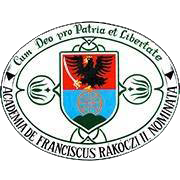Будь ласка, використовуйте цей ідентифікатор, щоб цитувати або посилатися на цей матеріал:
https://dspace.kmf.uz.ua/jspui/handle/123456789/4455| Назва: | Теоретичні засади інклюзивної освіти в Угорщині |
| Інші назви: | Theoretical basis of inclusive education in Hungary |
| Автори: | Михайлович Кристина Krystyna Mykhailovych Mihajlovics Krisztina |
| Ключові слова: | інклюзивна освіта;Угорщина;інтеграція;інтегроване навчання;сегреговане навчання |
| Дата публікації: | 2024 |
| Видавництво: | Видавництво «Код» |
| Вид документа: | dc.type.study |
| Бібліографічний опис: | In Наукові записки. Серія: Педагогічні науки. 2024. Випуск 6. c. 114-118. |
| Серія/номер: | Серія: Педагогічні науки;Випуск 6. |
| Короткий огляд (реферат): | Резюме. У статті досліджено теоретичні засади інклюзивної освіти в Угорщині. Серед характеристик інклюзивної школи виділено: інтегроване навчання й сегреговане навчання. Розкрито основні типи інтеграції:
спонтанна інтеграція; локальна, місцева інтеграція; соціальна інтеграція; часткова інтеграція; повна інтеграція. Показані рівні інтегрованої освіти та навчання в Угорщині та два різновиди інтеграції, що розписані у
статті: прийняття (fogadás) та включення (befogadás). Доведено, що як об’єктивні, так і суб’єктивні умови
в Угорщині відіграють важливу роль в успішній інклюзивній освіті. Надано короткий огляд основних особливостей інклюзії в Угорщині. Показано роль міжнародних організацій, що підтримують інтегровану освіту. Abstract. The article examines the theoretical foundations of inclusive education in Hungary. Among the characteristics of an inclusive school, the following are highlighted: integrated education and segregated education. The main types of integration are revealed: spontaneous integration not conscious (children with special educational needs are not evaluated and their development is not dealt with individually, but they study in the classroom together with others); local, local integration (children study in the same building, but in separate groups, without any connection between them – in practice, this is a form of segregation, since the old auxiliary classes worked according to this principle); social integration (during school time, children are in separate groups, but in their free time they consciously mix); partial integration (children study certain subjects in separate classes in small groups – usually core subjects such as language or mathematics, but are with their peers for the rest of the school time, in the extended day group and in free time); full integration (children spend all their time together, but at the same time have a separate curriculum). The levels of integrated education and training in Hungary and the two types of integration described in the article are shown: acceptance (fogadás) and inclusion (befogadás). Inclusion in Hungary is defined as a high-quality higher level of integrated education, which allows not only to adapt students with disabilities, but also to change the consciousness of the host community. The aim of inclusion is for all children to be admitted to a general education institution close to where they live, and for school life, methods, organisation, curricula, staff and facilities to be adapted to the needs of children with special needs as far as possible. |
| Опис: | https://opac3.brff.monguz.hu/hu/record/-/record/bibBRF00014093 https://sites.google.com/uica.education/nayka/%D0%BD%D0%B0%D1%83%D0%BA%D0%BE%D0%B2%D1%96-%D0%B7%D0%B0%D0%BF%D0%B8%D1%81%D0%BA%D0%B8-6 |
| URI (Уніфікований ідентифікатор ресурсу): | https://dspace.kmf.uz.ua/jspui/handle/123456789/4455 |
| ISBN: | 978-617-653-088-6 |
| ISSN: | 2786-6904 (Print) 2786-6912 (Online) |
| metadata.dc.rights.uri: | http://creativecommons.org/licenses/by-nc-nd/3.0/us/ |
| Розташовується у зібраннях: | Mihajlovics Krisztina Наукові записки. Серія: Педагогічні науки |
Файли цього матеріалу:
| Файл | Опис | Розмір | Формат | |
|---|---|---|---|---|
| Mykhailovych_Krystyna_Teoretychni_zasady_inkliuzyvnoi_osvity_uhorshchyni_2024.pdf | In Наукові записки. Серія: Педагогічні науки. 2024. Випуск 6. c. 114-118. | 348.24 kB | Adobe PDF | Переглянути/Відкрити |
Ліцензія на матеріал: Ліцензія Creative Commons





